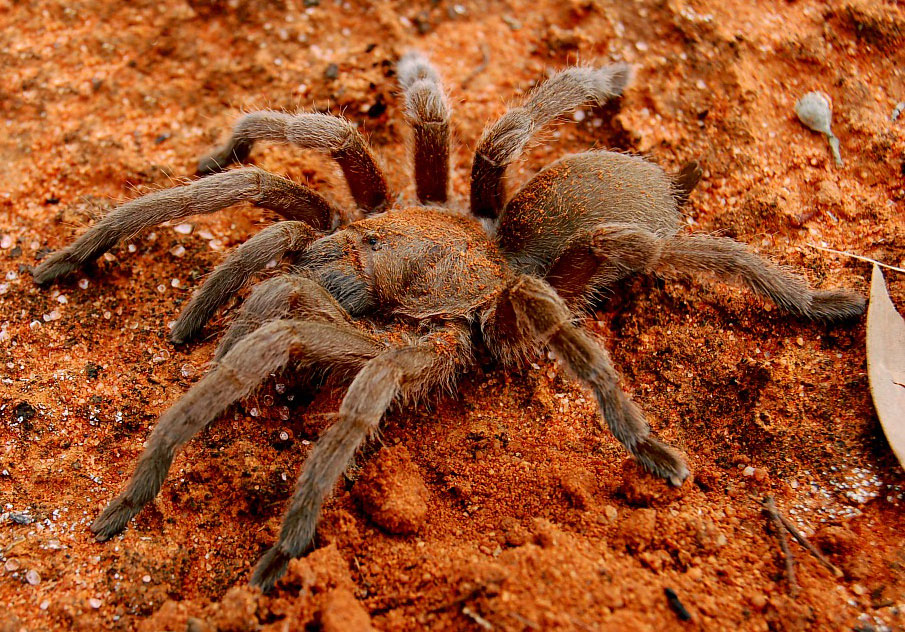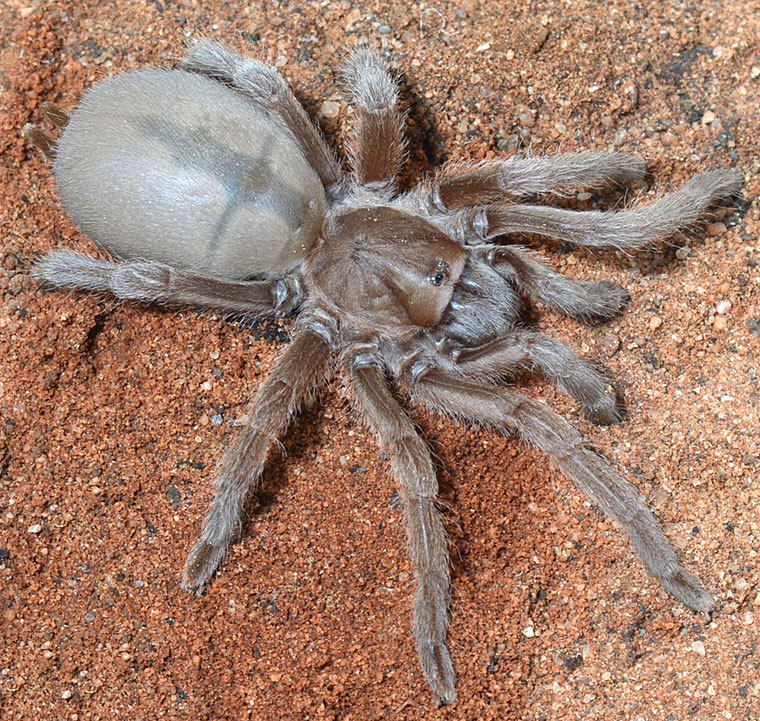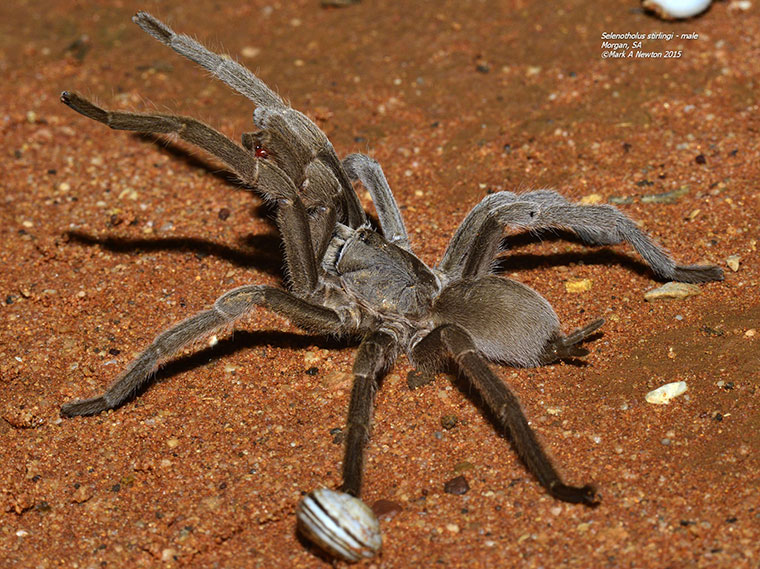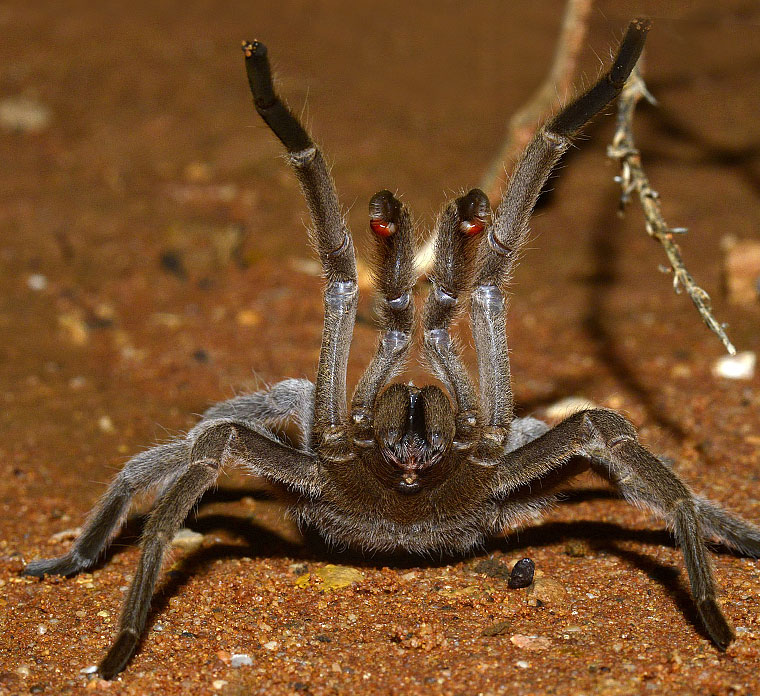Large grey-brown tarantula in drier inland areas, occurring patchily from the NT-WA coast to the NSW VIC border, mostly concentrated in inland NSW, SA and NT. Abdomen without colour pattern, front and rear legs of equal thickness, thick hair pads on feet, hairs on cephalothorax and abdomen mostly quite short giving a velvety appearance, spinnerets finger like, extending behind abdomen. The thick hair pads on their legs and "feet" allow these spiders to easily climb glass or smooth plastic walls. Most active in spring and late summer into autumn. Burrows may be up to a metre deep, sometimes more. Spiders hunt at night from the burrow entrance. Bites are usually mild, but have the potential to produce a severe reaction. (Helen Smith, Australian Museum, Robert Raven, Queensland Museum.) Like Phlogius (Selenocosmia) crassipes this species is a true Phlogius and will be moved when Australian theraphosids are revised (Raven, pers. comm.) ♀ 55mm ♂ 45mm
- Female Northern Mallee SA mother of the female immediately below
- Female Northern Mallee SA (at 7 years of age) daughter of the female above
- Male Morgan SA 5320
- Male Morgan SA 5320
Female Northern Mallee SA mother of the female immediately below

Female Northern Mallee SA (at 7 years of age) daughter of the female above

Male Morgan SA 5320

Male Morgan SA 5320


